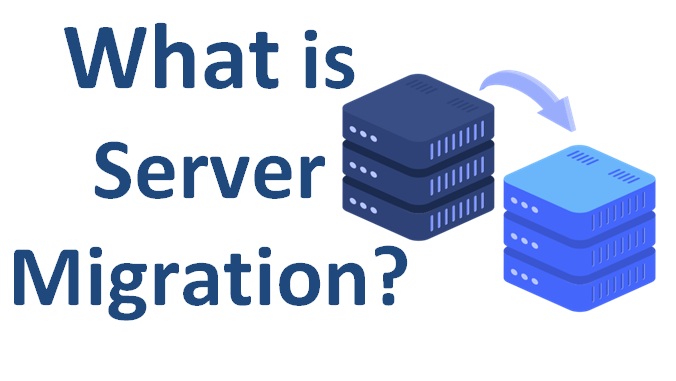What Is Server Migration?
●Server migration is the process of moving data from one server to another server.
●But server migration isn’t as simple as exchanging physical, owned, on-premises machines for virtual, rented servers at your cloud provider’s data centers.
●It basically entails configuring a target server to replace an existing one by copying over websites and their configurations and changing DNS to direct visitors to a new server
Why it needs to Migrate the Servers?
1.When company wants to migrate servers is hardware limitations or faults.Certain pieces of hardware won’t be able to perform on the same level as newer iterations, and damaged hardware may only serve to further inform a company’s decision to migrate servers.
2.If company may want to take advantage of newer server technologies to upgrade and improve its system’s functionality. This is especially important if a server needs to have increased flexibility and scalability.
How To Plan for a Server Migration
●Server migration is a risky process for even the most experienced server maintenance team. Server failure, data loss, or data breaches can all cause headaches.
●So, pre-migration planning is essential in limiting and mitigating the risks associated with server migration.
●It’s important to work with server migration checklist so that the server maintenance team understands the exact risks.
How To Migrate Servers?

Step 1 – Configure the New Server
The first step in the server migration process involves preparation of the new server. This includes configuring the server settings, permissions, and authorizations. Without appropriate preparation, businesses risk losing critical data in the migration.
Some considerations during this process are the server size, server permissions, server performance, and future scalability.
Step 2 – Access Data Fidelity
Data fidelity is a process that involves accounting for all data involved in the server migration and making sure it is all present.
Even losing a single file, such as a CSS file can cause dire consequences for a server, which could lead to performance issues with the website.Checking files in an old database are of good quality. If the quality is poor, this could lead to further issues in data corruption.
Step 3 – Data transfer
Data transfer process is the largest and most time-consuming process between servers. Before starting this process, it’s important to ensure that the new servers are prepared and that all files are secure.
When transferring information, all information is transported via the bandwidth between the old server and the new server. The greater bandwidth available, the faster the data transfer can take place, and the quicker this step will be.
It’s important to let know this migration process to employees, customers, and shareholders when the date of the transfer is taking place to avoid miscommunication.
Step 4 – QA Testing
After data transfer process done from one server to another, it’s advised to put the new server through a Quality Assurance testing the software for performance or processing issues.
A significant portion of the migration project time should be reserved for this step, as it’s essential to ensure the server is unlikely to fail regularly. Not all data transfers are 100% successful, so it’s necessary to put the server through a rigorous testing process to identify faults in the software.
Step 5 – Change the DNS, Go Live
Switching the DNS so that users are now directed toward the new server.Switching a DNS is a pretty simple process, but it’s best to make sure it’s done during companies non working hours like nights, weekends, and holidays.Now that the DNS has been switched, the server is ready to go live.
How Long Does Server Migration Take?
●The time of server migration process varies and depends on factors including but not limited to, server size, data size, bandwidth speeds, site traffic, and time of day.
●Server migration typically takes up to thirty minutes at the quicker end of the spectrum, to up to three hours for server migrations involving significant data transfer .
Advantages of Server Migration-
1.Improved Performance: After migrating done, the new server will likely improve performance.
2.Scalability & Flexibility: It allows for upgrades in server scalability and flexibility.
3.Security & Compliance: Upgrading to a newer server allows the server maintenance team the ability to improve data security.
4.Reliability: After server migration process, the reliability of a server can be improved.
